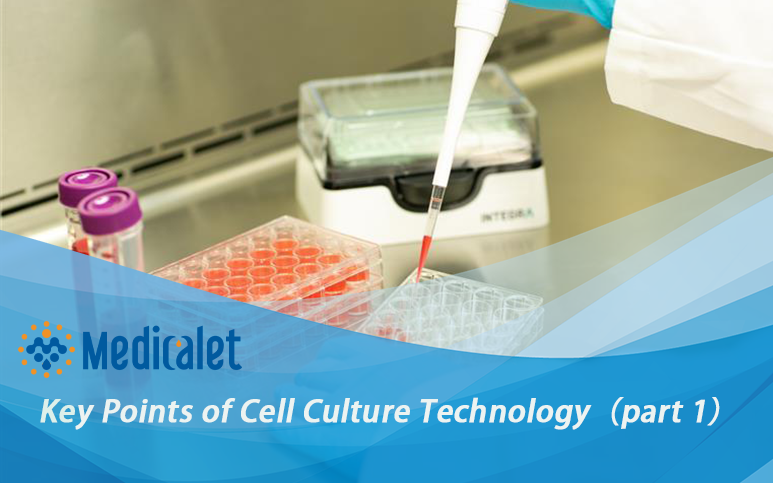
What is cell culture?
Cell culture refers to the process of growing cells under controlled conditions outside their natural environment. It is an in vitro tool that aids the understanding of cell biology and the mechanisms of diseases. It also plays a role in drug discovery for applications such as drug toxicity testing and pharmacokinetic/pharmacodynamic studies, as well as in personalized medicine.
Cell culture techniques
Adherent vs. suspension cultures
There are two basic systems for growing cells: adherent and suspension cultures. Adherent cultures are grown on an artificial substrate, whereas cells grown in suspension are free-floating in the culture medium. While only a few cell types naturally grow in suspension (e.g. lymphocytes), many adherent cell types can be adapted to suspension cultures.

There are two reasons for culturing naturally adherent cells in suspension. The first advantage of suspension cultures is that it's easier to passage the cells, as you don't need to detach them from a culture vessel by enzymatic or mechanical dissociation. Secondly, suspension cultures are easier to scale up, as the cell growth is only limited by their concentration in the medium, not by the available surface area. The major downside of suspension cultures is that they require daily cell counts and viability determination to follow growth patterns, whereas adherent cultures can easily be inspected under a microscope.
Cell culture challenges
Despite the different approaches and techniques, all experiments have one thing in common: it’s difficult to grow viable cells in the desired quantity to obtain reproducible results. The following sections are therefore dedicated to the four major challenges – reproducibility, contamination, viability and the transition to automation.
Reproducibility
According to a survey in Nature, more than 70 % of scientists reported that they failed to reproduce another scientist's experiment, and over half failed to reproduce their own work.4 In cell culture assays, a large proportion of the reproducibility issues come from biological variation between passages or generations of cells. Another huge problem is the misidentification of cell lines, while inconsistencies in culturing parameters play an important role too.
Biological variation
Every time a cell divides, there’s a risk that factors such as random mutations or transcription errors will affect the reproducibility of the experiment. To avoid this, you should create a cell bank at the very beginning of a new project.
Misidentification of cell lines
The problem of cell line misidentification has been known since the 1960s, when a scientist described HeLa cell contamination of 19 other human cell lines.5 To ensure that your results are reliable and, even more importantly, that you don't draw the wrong conclusions, you should put all new cell lines that enter your lab into quarantine until their origin is authenticated. On top of this, it’s recommended that cell line authentication is repeated before cryopreservation and distribution to other labs, and after the completion of a project. To authenticate a cell line, you should first check if it’s listed in the register of misidentified cell lines. If it's not registered, you still need to confirm its authenticity. For human cell lines, performing short tandem repeat (STR) profiling (DNA fingerprinting) is recommended. Various test methods are available for non-human cell lines, including karyotyping, isoenzyme analysis and mitochondrial DNA typing (DNA barcoding).
Medicalet can provide you with the best Cell and Tissue cultureculture product. Medicalet laboratory equipment is outstanding in terms of innovation, ergonomic, design and functionality, providing worldwide users efficiency and comfort in their daily work.
If you are interested in our products, please feel free to contact us and ask for samples!
